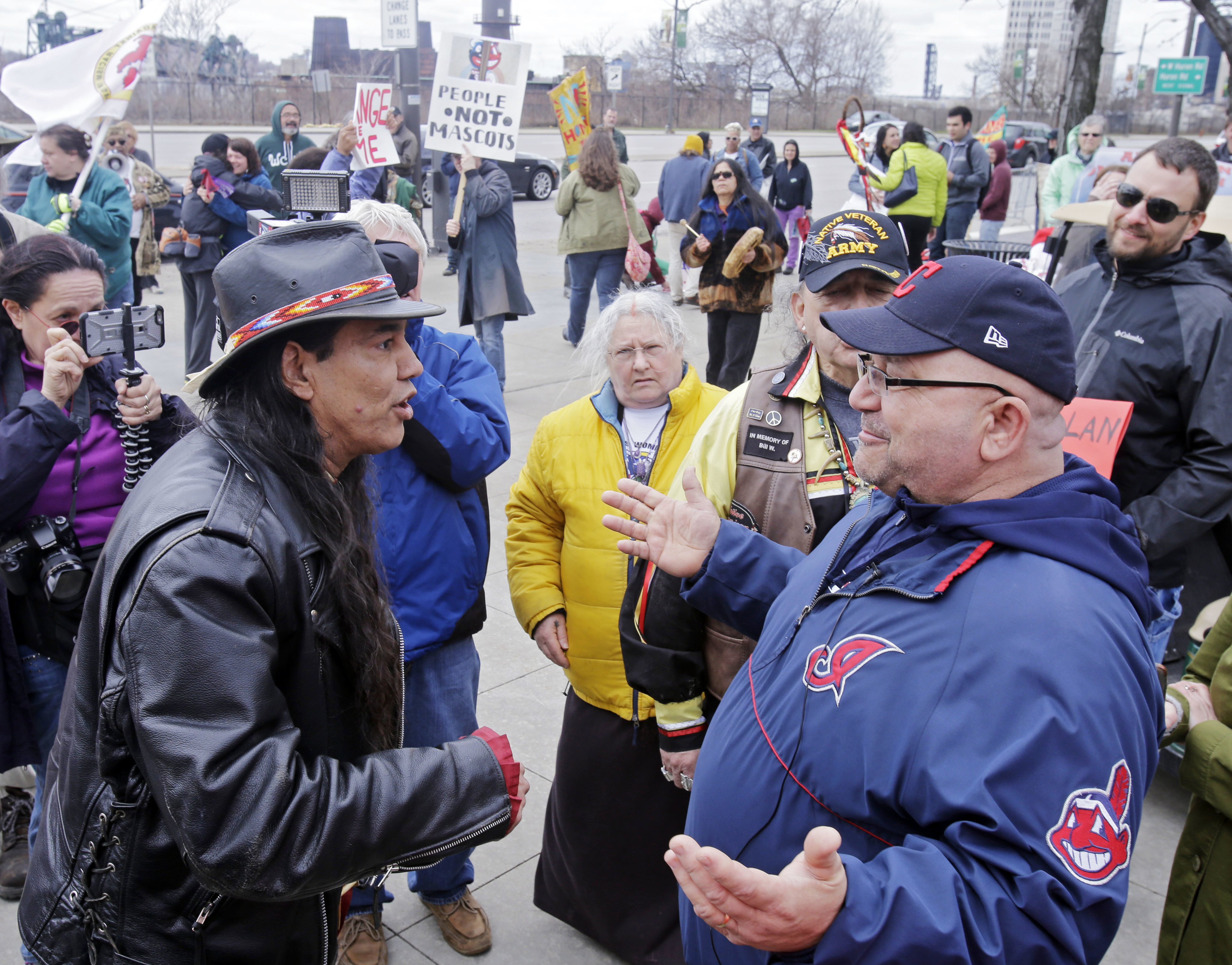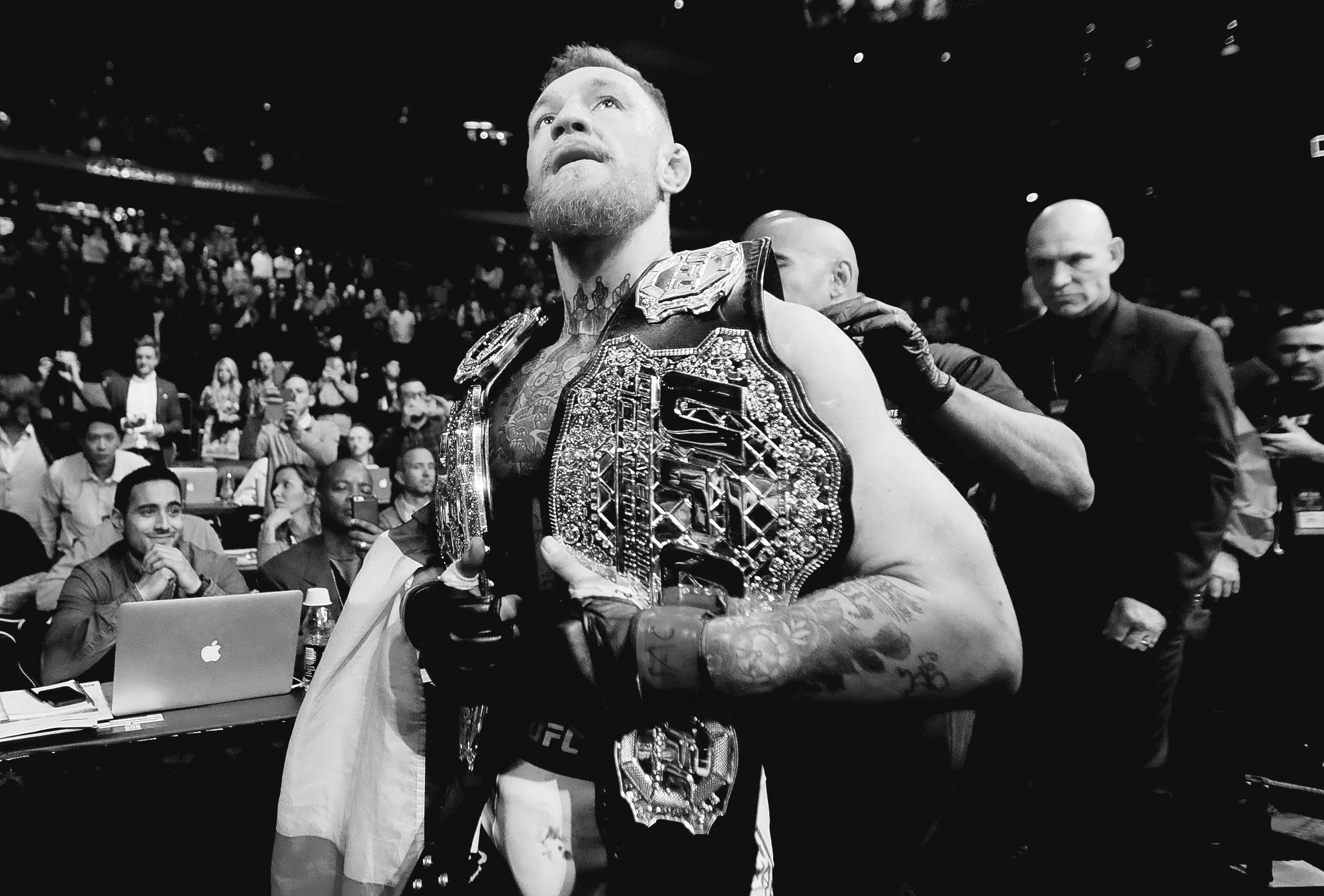
By FELICIA FONSECA
Associated Press
Cleveland native Josh Hunt is not a fan of baseball. But he’s showed up at Progressive Field where the Indians play for the past couple of years to protest the team name and its mascot, Chief Wahoo — confronted with fans in headdresses and face paint, some playing small drums.
“Being Native American myself, it’s a reminder that our city and our society doesn’t see me as a human being,” he said. “It would prefer to portray me as a racist stereotype, a bloodthirsty savage.”
The protests have been happening since at least the 1970s, and this week marked what American Indians say is a small but meaningful change in professional sports. The players won’t don Chief Wahoo on their uniforms starting in the 2019 season, when Cleveland will host the All-Star Game, though the red-faced cartoon with a big-toothed grin and feather headband won’t disappear from merchandise.
Major League Baseball Commissioner Rob Manfred and team owner Paul Dolan said the change was about diversity and inclusion. Manfred met with the National Congress of American Indians last April, after the club had reduced Wahoo’s visibility and introduced a block “C” as the club’s primary insignia. The NCAI’s executive director, Jacqueline Pata, said she knew the All-Star game was putting pressure on the team, and she further impressed that change would equate respect.
“Once you make this big step and the public understands, it makes a statement in itself,” said Pata, of the Tlingit Tribe of Alaska. “I continue to say an informed public will make decisions about what they buy and how they want to be associated with the sports teams.”
The group has kept a list of schools and sports teams that use indigenous imagery, mascots and names, once a common tradition throughout the U.S. Change has come: Savages to Blue Hawks at Dickson State University. Indians to Big Green at Dartmouth College. Warriors to Golden Eagles at Marquette University. School districts in Minnesota and Wisconsin have banned Native American mascots for decades.
Pata said about 1,000 names still are targeted, including the NFL’s Kansas City Chiefs, the MLB’s Atlanta Braves and the NHL’s Chicago Blackhawks. The imagery isn’t limited to the United States.
Brazil’s Chapecoense, a soccer team that lost 19 of its players in a November 2016 air crash, has a mascot named for a 19th century leader of the Kaingang Tribe. Locals in Chapeco, a majority white city, say using the mascot is hypocritical and racist considering the last surviving Kaingangs have been pushed to the edges of the city and beyond.
Most of the efforts for change in the United States are at the high school level. But the biggest push nationally is against the NFL’s Washington Redskins, a name team owner Dan Snyder is intent on keeping. The U.S. Justice Department recently gave up a legal fight over the name it said is disparaging because of a Supreme Court decision that favored an Asian-American band calling itself the Slants. That means the Redskins likely would prevail in a legal battle to cancel the team’s trademarks.
The Redskins declined comment Tuesday on Cleveland’s decision. NFL Commissioner Roger Goodell told ESPN Radio that he doesn’t see Snyder changing his perspective and pointed to a Washington Post poll from 2016 that found that 90 percent of 504 Native Americans surveyed nationwide did not think the Redskins name was offensive.
Pata sees public sentiment being the main tool in challenging the names and logos. Activists have used the courts, protested, burned mascots in effigy, advertised and had forums on imagery in sports to explain the disparities it creates for Native youth and the misconceptions about contemporary Native Americans. Hunt said those discussions are most productive when he meets people one on one, away from the Cleveland stadium he calls “regressive field,” and is hopeful momentum leads to further change.
“While it seems bleak, it really has shocked people into at least waking up a little and paying attention to things like this, racist imagery, to our country’s history, how we’ve treated Native Americans and African Americans,” said Hunt, an enrolled member of the Cheyenne and Arapaho Tribes of Oklahoma.
Charlene Teters was among a group of people arrested in 1998 outside the Cleveland stadium for burning an effigy of Chief Wahoo she likened to Little Black Sambo — a character from an 1899 children’s book widely considered to be racist. It was a way for Native Americans, who make up about 2 percent of the U.S. population, to be heard after years of holding signs, she said. The movement now is being led by a younger generation of Native Americans who see how imagery affects them, she said.
“That says to me it’s over because our young people get it, and they’re taking up that challenge and doing it their own way,” said Teters, a Spokane tribal member and academic dean at the Institute of American Indian Arts in Santa Fe, New Mexico.
For some Cleveland fans, Chief Wahoo has been a beloved part of the team since 1947 and they don’t want to see the players without him. They’ve seen Wahoo as a sign of hope, as a symbol of Cleveland’s renaissance in the 1990s when the team’s fortunes turned on the field — urging through signs and T-shirts to keep him.
“That’s the way it is, I guess,” said Jeremiah Baker of North Ridgeville, Ohio, wearing one of the team’s blue caps with a red “C.” ”I know people get offended about just about everything nowadays. It’s disappointing.
















